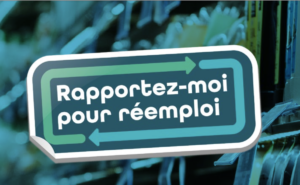Covid, guerres, enjeux environnementaux et singulièrement rareté de la ressource, nos « supply chains » sont passées ces dernières années de l’ombre à la lumière, révélant toute leur complexité, leurs richesses et, parfois, leurs aberrations. De quoi parle-t-on ? La supply chain intègre plusieurs faisceaux d’action des entreprises : la chaîne logistique, qui permet l’organisation de la production, de la réception à la livraison du produit, mais aussi la chaîne d’approvisionnement, qui elle permet la maîtrise des coûts de transport, de stockage, des ressources, … A ce titre, la « supply », comme on dit, constitue le chaînage stratégique, et souvent manquant, d’une vraie transition économique et environnementale, celle qui permettrait de passer des pactes aux actes. On peut l’imaginer comme une chaîne de dominos. Il suffit qu’un seul ne soit pas en place pour que tout s’arrête, que l’effet domino soit stoppé et que la réaction en chaîne n’ait pas lieu.
Se doter d’une supply chain performante, conforme aux impératifs actuels et à venir (CSDDD) de la transition, c’est garantir des chaines d’approvisionnement plus robustes, une sérieuse avance en termes de sourcing, et des risques juridiques et réputationnels laissés à la concurrence… Cela mérite un diagnostic ! Vous produisez, assemblez, revendez des biens ? Ce diagnostic débouchera sans doute sur un plan d’actions en plusieurs étapes. Vos usines et implantations européennes sont peut-être décarbonées et conformes à la réglementation, mais les bilans carbones nous l’ont appris : ce sont les scopes 2 et 3 qui pèsent dans nos empreintes : 90% des impacts -et des risques- sont ceux des usines lointaines.
Il faut donc sourcer agile et juste, construire des cahiers des charges produits sans détour et avec les bons intrants, assembler au mieux, acheminer et livrer, reprendre et recycler. Le projet de règlement européen sur la déforestation importée, par exemple, n’est que le 1er étage d’une fusée du « green procurement » : soja, bœuf, huile de palme, bois, caoutchouc, cacao café, ainsi que certains produits dérivés comme le cuir, le chocolat et les meubles sont dans le viseur.
Il est donc temps d’agir. Quelques conseils, un peu en vrac, tant la matière est riche, pour aller vite et loin :
1/ L’empreinte environnementale est globale, ce n’est pas que le carbone, loin de là !
Fournisseurs, cahiers des charges produits, approvisionnements : choisir, c’est apprécier globalement l’enjeu environnemental. Quelles matières retenir (plastiques ? bois ? alternatives ?), quelle chimie employer, quels potentiels de fin de vie du produit (recyclabilité, compostabilité, réemployabilité) ?
2/ Il est vital de structurer l’approche en consolidant les enjeux clés et en déclinant votre axe qualité. Attention aux fausses allégations, qui sont myriades dans le sourcing. « Compostable » ne veut rien dire en soi, « bio dégradable » non plus, « recyclage » se mesure, « matières bio sourcées » aussi. Il faut un contenu et des étiquetages sérieux et précis.
3/ Penser la traçabilité et les données (existence et qualité) avec vos fournisseurs dès le départ. Le digital peut jouer un rôle majeur dans ce domaine avec l’automatisation de la collecte de données à travers toute la chaîne, de la fabrication à la livraison (en utilisant les analytics pour le calcul de l’empreinte carbone à partir de données de packaging pour les rendre les plus greens possibles, sur les stocks pour les optimiser et sur les moyens de transports pour une meilleure utilisation de l’énergie). Il est également possible de recourir à l’utilisation de la blockchain pour suivre de manière précise et « certifiée » l’empreinte carbone des produits à travers toute la chaîne logistique.
4/ Identifier les réglementations clés qui peuvent impacter significativement votre approche et votre « licence to operate ». En Europe, la politique globale met une pression considérable sur les produits plastiques et les usages uniques, la chimie sera à revoir avec le complément du règlement « Reach » et un « passeport numérique produit » est prévu par le règlement européen sur l’éco conception. Il qualifiera la durabilité, le degré de réemploi, la réparabilité, la règlementation des substances, l’efficacité énergétique et le choix des matières, la teneur en recyclé, la recyclabilité, l’empreinte environnementale et carbone. Ce passeport aidera les consommateurs à faire des choix éclairés lorsqu’ils achètent un produit et il facilitera le travail des autorités quant à la conformité. Ce n’est pas un mince enjeu.
5/ Prioriser par secteur et sous-secteur, analyser les fameux « sous-jacents ». La supply chain de l’un n’est pas la supply chain de l’autre. Au sein même des opérations d’un acteur, les chaines de valeur de différents produits et services varieront et ne pourront être traitées par une seule stratégie. Ces chaines doivent être analysées sous plusieurs angles : par priorité, par poids ou par criticité. Chaque supply chain, et ses sous-segments, doivent tenir compte des réalités et grandes tendances du marché de demain (explosion démographique, tensions géopolitiques, raréfaction des ressources, …). Les supply chains les plus à risques de pressions règlementaires, sociétales ou économique devront se réinventer en premier. Chaque élément doit être vu sous l’angle de critères « développement durable ».
6/ Mobiliser les chaînes de valeur et transformer les supply chain en éco systèmes de valeur pour la R&D et pour l’investissement
7/ Réconcilier fin du monde et fin du mois : le « peu cher » est souvent une vue de l’esprit, un effet d’optique, il faut considérer le coût total d’acquisition, qui intègre une éventuelle taxe carbone, des bonus-malus aux frontières, des contributions aux éco-organismes, des investissements sur la chaîne de valeur amont (engagements et aides financières du donneur d’ordres à toutes les étapes de la chaine de valeur, contrats pluriannuels vs annuels, …)
8/ Ne plus se contenter de business plans purement financiers, il faut une vue complète des plans d’affaires qui doivent intégrer des prévisions fiables des impacts liés à l’environnement et les processus budgétaires qui en découlent.
9/ Le « change management » est essentiel, de même que la mise en place de KPIs de mesure de performances des acteurs de la supply chain interne. Car si l’on continue à juger la performance des acheteurs ou logisticiens avec pour seule référence les coûts et en omettant les KPIs liés à la transition économique et environnementale, il ne se passera jamais rien !
La supply chain ne peut aujourd’hui qu’être verte !



